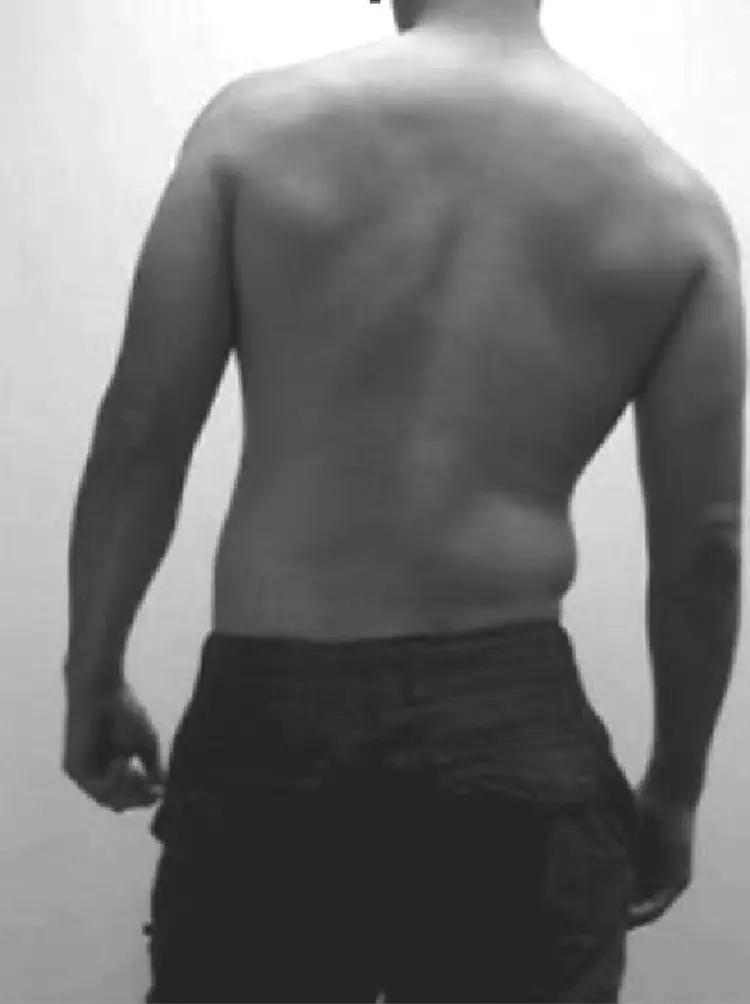The lumbar shift is frequently observed clinically in patients suffering from back pain or sciatica. Often associated with disc pathology, it is generally associated with a guarded prognosis.
Fortunately, there are ways to treat this lateral displacement of the trunk which often affects the mobility and movement of the affected person.
This article written by a physiotherapist explains where lumbar shifts come from, and how to treat them.
Definition and presentation
Also called scoliotic attitude, lateral shift or lateral deviation, the lumbar shift represents a lateral displacement of the trunk in response to acute low back pain. According to studies, it would be present in 5 to 56% of cases of lower back pain. It is generally associated with pain radiating to the lower limb, such as sciatica or cruralgia.
The lumbar shift is to be differentiated from a structural scoliosis. Indeed, the latter is fixed due to vertebral changes affecting posture. The shift is most often temporary and reducible (with or without treatment). Similarly, it disappears when the patient is positioned in the supine position (on the back).
This displacement of the trunk is observable in a standing position, and can be done to the right or the left. To qualify it, we observe the movement of the shoulders in relation to the hips. The shift can be done on the same side of the pain (also called ipsilateral lumbar shift), or even on the opposite side (contralateral shift). For example, a patient with left lumbar pain would exhibit a contralateral (or right) lumbar shift if their shoulders and trunk were shifted to the right relative to their pelvis.
The majority of patients present with a contralateral shift (nearly 90% of cases), with only 10% of cases associated with an ipsilateral shift. In some rare cases, the displacement may change and vary from side to side.
As it affects posture and movement, a lumbar shift can cause pain in related structures and affect quality of life. Thus, it is not uncommon for patients to complain of pain in the hip, knee or cervico-dorsal level in response to lateral trunk deviation.
The lumbar shift is regularly associated with a poor prognosis, especially if the shift seems irreversible and persistent. This implies that the condition responds less well to conservative treatment, and that more invasive modalities are sometimes necessary to correct the source of the problem (such as a infiltration or an surgery).
Causes
Typically, the lumbar shift is explained by the compensation of the body which aims to avoid the compression or the irritation of a nerve root affected by a discal pathology. For example, a herniated disc left L5-S1 would cause a compensatory phenomenon manifested by a right lumbar shift of the patient aimed at avoiding disc pinching at the left L5-S1 level.
The cases of ipsilateral lumbar shifts, although rare (10% of cases as mentioned above), would be explained by a sagging of the vertebral body superior to the underlying vertebral body in response to a disc protrusion. This sagging would create a movement of the trunk on the same side, hence the ipsilateral lumbar shift.
Summary: Documented causes of lumbar shift include:
- disc protrusion (video explanation)
- Herniated disc
- Disc extrusion
- Disc narrowing
- muscle spasm
- Radiculopathy
- Post-arthrodesis
- Post-discectomy
- etc.
Treatment
As mentioned, the lumbar shift is often associated with a poor prognosis. This is all the more true if the deviation is not easily reversible, if we also observe a Lasègue sign crossed, and/or if the shift appears after surgery (such as a discectomy or an lumbar arthrodesis).
The Mckenzie method is a method of choice for correcting lumbar shift. One study demonstrated a more significant resolution of the shift within 90 days in patients treated with this method compared to people who received no treatment (Gillan and colleagues, 1994).
Moreover, according to the Mckenzie method, the lumbar shift should be treated first when it is noticed by the health professional. Robin McKenzie, the founder of this technique, notes that lateral deviation correction is most effective if treated within the first 12 weeks of onset.
To do this, repeated movements (with or without assistance) will be performed, and the patient's response will be noted (amplitude, intensity and location of pain, etc.). More specifically, the objective will be to correct the lateral deviation, and centralize the symptoms.
To know everything about the Mckenzie method, see the following article.
References
- https://www.ncbi.nlm.nih.gov/pmc/articles/PMC2700497/
- https://www.ncbi.nlm.nih.gov/pmc/articles/PMC4987148/
- https://europepmc.org/article/pmc/2700497
My name is Anas Boukas and I am a physiotherapist. My mission ? Helping people who are suffering before their pain worsens and becomes chronic. I am also of the opinion that an educated patient greatly increases their chances of recovery. This is why I created Healthforall Group, a network of medical sites, in association with several health professionals.
My journey:
Bachelor's and Master's degrees at the University of Montreal , Physiotherapist for CBI Health,
Physiotherapist for The International Physiotherapy Center


